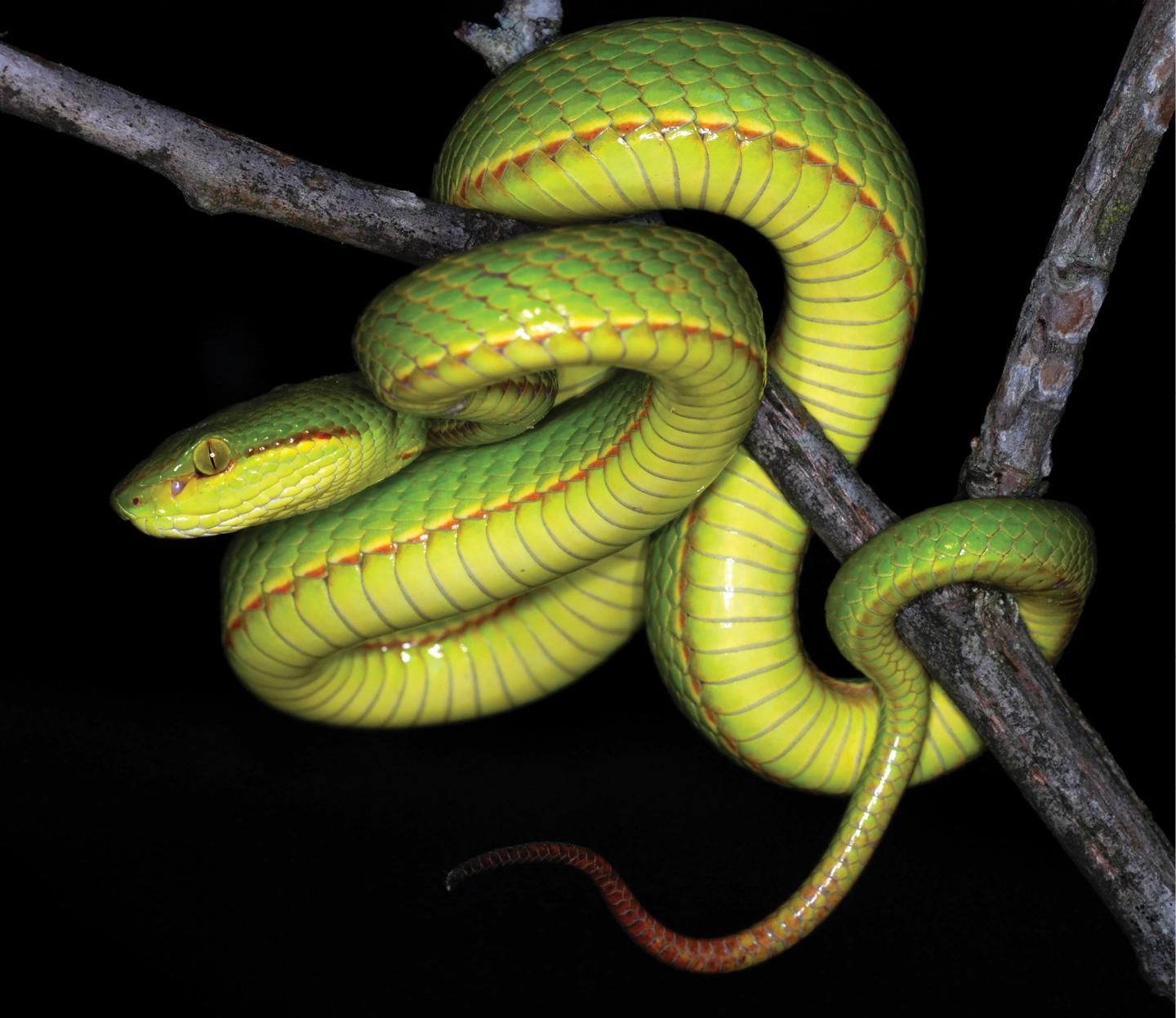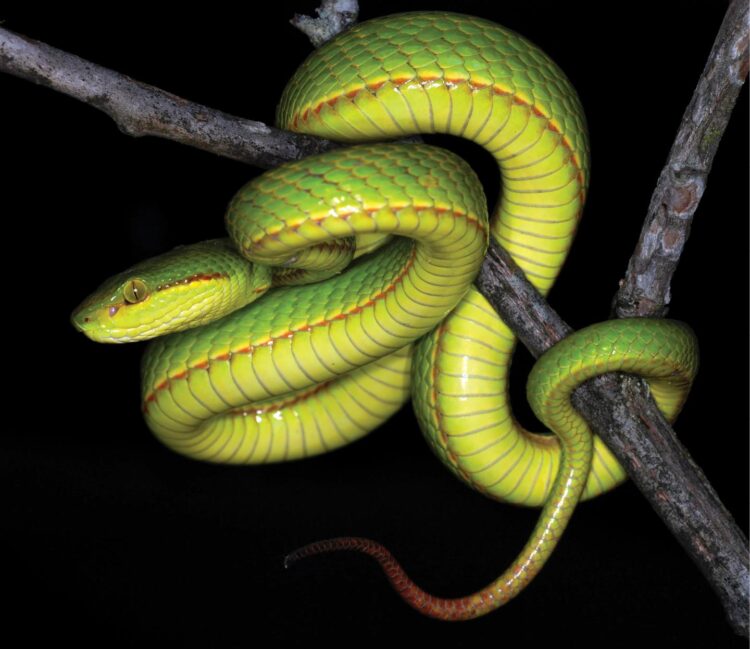
Credit: Aamod Zambre and Chintan Seth, Eaglenest Biodiversity Project
A new green pit viper species of the genus Trimeresurus was discovered during the herpetological expedition to Arunachal Pradesh in India, part of the Himalayan biodiversity hotspot. The scientists named the newly-discovered snake Trimeresurus salazar after a Parselmouth (able to talk with serpents) wizard, co-founder of Hogwarts School of Witchcraft and Wizardry and the founder of the House of Slytherin – Salazar Slytherin, the fictional character of J.K. Rowling’s saga “Harry Potter”. The discovery, authored by Zeeshan Mirza of the National Centre for Biological Sciences, Bengaluru, Mr. Harshal and Mr. Mandar of the Bombay Natural History Society, Mumbai, Mr. Gowande of Pune’s Fergusson College and Mr. Phansalkar of the Wildlife Institute of India, Dehradun, is published in the open-access journal Zoosystematics and Evolution.
The pit vipers in the genus Trimeresurus are charismatic venomous serpents, distributed widely across east and southeast Asia. In total, the genus includes at least 48 species, with fifteen representatives occurring in India. The species belonging to the genus are morphologically cryptic, which makes it difficult to distinguish them in the field. As a result, their real diversity could be underestimated.
Arunachal Pradesh, where the new species was found, belongs to the Himalayan biodiversity hotspot, which explains the diverse flora and fauna being continuously discovered there.
The new green pit viper demonstrates a unique orange to reddish stripe, present on the head and body in males.
Explaining the name of the new species, the scientists suggest that it is colloquially referred to as the Salazar’s pit viper.
This is already the second species discovered within the course of the expedition to Arunachal Pradesh, which reflects the poor nature of biodiversity documentation across north-eastern India.
“Future dedicated surveys conducted across northeastern India will help document biodiversity, which is under threat from numerous development activities that include road widening, agriculture, and hydro-electric projects”, shares the lead researcher Dr. Zeeshan A. Mirza from National Centre for Biological Science of Bangalore, India.
###
Original source:
Mirza ZA, Bhosale HS, Phansalkar PU, Sawant M, Gowande GG, Patel H (2020) A new species of green pit vipers of the genus Trimeresurus Lacépède, 1804 (Reptilia, Serpentes, Viperidae) from western Arunachal Pradesh, India. Zoosystematics and Evolution 96(1): 123-138. https:/
Additional information
Contact:
Dr. Zeeshan A. Mirza
Email: [email protected]
Facebook: https:/
Instagram: zeeshan_a_mirza
Media Contact
Dr. Zeeshan A. Mirza
[email protected]
Related Journal Article
http://dx.





